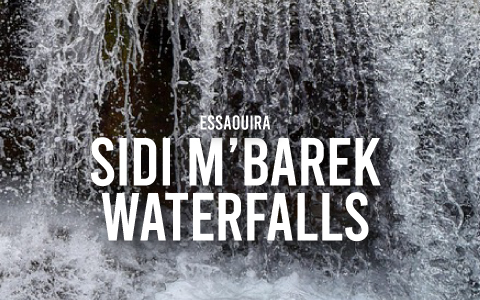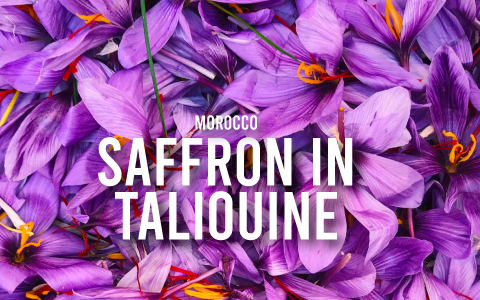
A Day Trip from Essaouira’s to the Hidden Oasis of Sidi M’barek
Set along Morocco’s Atlantic coast, Essaouira is definitely worth a visit. Its Medina, the souk and the seafront ramparts whisper stories of sailors, merchants, and artists. Known as the “Wind City of Africa,” the city’s long golden beaches are a haven for surfers, while bohemian travelers can relax in places like Diabat. Among the treasures scattered around Essaouira’s hinterland, few are as unexpectedly beautiful as the Sidi M’barek Waterfalls—a tranquil, hidden oasis that cascades through cliffs of red earth before flowing into the ocean.
The Setting of Sidi M’barek Waterfalls
The Sidi M’barek Waterfalls—also called Cascades de Sidi M’barek—are a series of small but scenic cascades set amid Morocco’s wild Atlantic landscape. They take their name from Sidi M’barek, a local saint whose shrine overlooks the falls. The site has long been a place of pilgrimage and reflection for the region’s inhabitants, blending natural beauty with spiritual significance.
Geographically, the waterfalls are located between the coastal villages of Sidi Kaouki and Imsouane, about a 40-minute drive from Essaouira. The landscape here is strikingly diverse: sandy dunes give way to rocky cliffs, and small streams wind their way through green oases before plunging toward the sea.
The falls themselves are fed by a natural spring that emerges from the surrounding hills. Over centuries, erosion has carved the tufa and limestone cliffs into terraces, creating shallow pools and small cascades framed by reeds and oleanders. While the flow varies with the seasons—stronger in winter and spring, gentler in the dry months—the area retains its lush, peaceful charm year-round.
What to Expect When Visiting the Waterfall
Visiting Sidi M’barek is as much about the journey as the destination. The approach to the waterfalls begins in a small Berber village near Sidi Kaouki, where a dusty trail winds through dunes and fields scented with wild herbs. The walk takes about 20 to 30 minutes, depending on where you park, and offers glimpses of the Atlantic shining in the distance.
As you descend a narrow path between tall reeds, the cascades come into view. The largest waterfall drops around 10 meters, its flow gathering in a natural basin surrounded by soft sand and vegetation. The Upper Falls include smaller cascades where you can sit close to the water and enjoy the sound of the stream. However, the most photogenic spot is the Main Pool, perfect for cooling your feet or simply taking in the view.
What makes Sidi M’barek particularly magical is its setting. The waterfalls are just a short walk from the ocean, and from certain viewpoints you can see both the green oasis and the shimmering coastline in a single frame. Follow the stream a little further, and you’ll reach where the freshwater merges with the Atlantic.
Things to Do at Sidi M’barek
While the waterfalls themselves are modest in size, the surrounding landscape offers plenty to enjoy for those seeking a more immersive experience.
1. Hiking and Exploration
The area around Sidi M’barek is laced with scenic walking trails. You can hike along the cliffs to discover hidden beaches or wander inland toward the argan groves. The trails are not formally marked, but local guides—often from nearby Berber families—can lead you safely through the best routes.
2. Swimming and Relaxing
The pools beneath the falls are shallow and refreshing, ideal for a quick dip on warm days. Though not suitable for serious swimming, they offer a peaceful spot to cool down after your walk.
Several shaded spots invite you to linger, and if you bring a picnic it’s easy to spend an entire afternoon relaxing beside the pools. The atmosphere is tranquil, punctuated only by birdsong and the distant crash of waves.
3. Photography and Birdwatching
The combination of desert tones, green vegetation, and ocean horizon makes this one of the most photogenic spots near Essaouira. Early morning or late afternoon light enhances the colors, while migratory birds often stop in the area, adding to its quiet vitality.
4. Local Encounters and Tea with the Villagers
Several local families live near the trail and sometimes offer mint tea or homemade bread to visitors. Stopping for a chat is a lovely way to experience the famed Moroccan hospitality. If you hire a guide, they may also share stories about the marabout (saint) Sidi M’barek, whose shrine overlooks the site.
5. Combine with a Coastal Tour
Many travelers combine their visit to the waterfalls with nearby Sidi Kaouki, a laid-back surf village known for its long beach and relaxed vibe. It’s easy to spend a full day exploring both—the raw energy of the waves in the morning and the peaceful shade of the cascades in the afternoon.
How to Get There
Reaching Sidi M’barek from Essaouira is relatively straightforward, though the last stretch requires some walking. Drive south along the coastal road (N1) toward Sidi Kaouki. After about 25 kilometers, look for signs pointing to Cascades de Sidi M’barek. Turn inland onto a dirt track that leads to the small village near the falls. You can park there and continue on foot. The total drive takes around 40–45 minutes. Local taxis can be hired for a half-day or full-day trip, while several tour operators in Essaouira organize excursions that include the waterfalls, Sidi Kaouki, and sometimes a traditional lunch in a Berber home. For adventurous travelers, cycling or horseback riding along the coast offers spectacular views, though the sandy terrain can be challenging in places.
Remember to wear comfortable shoes, bring water, and protect yourself from the sun. The best time to visit is from March to June or September to November, when temperatures are mild and the waterfalls have a healthy flow.



